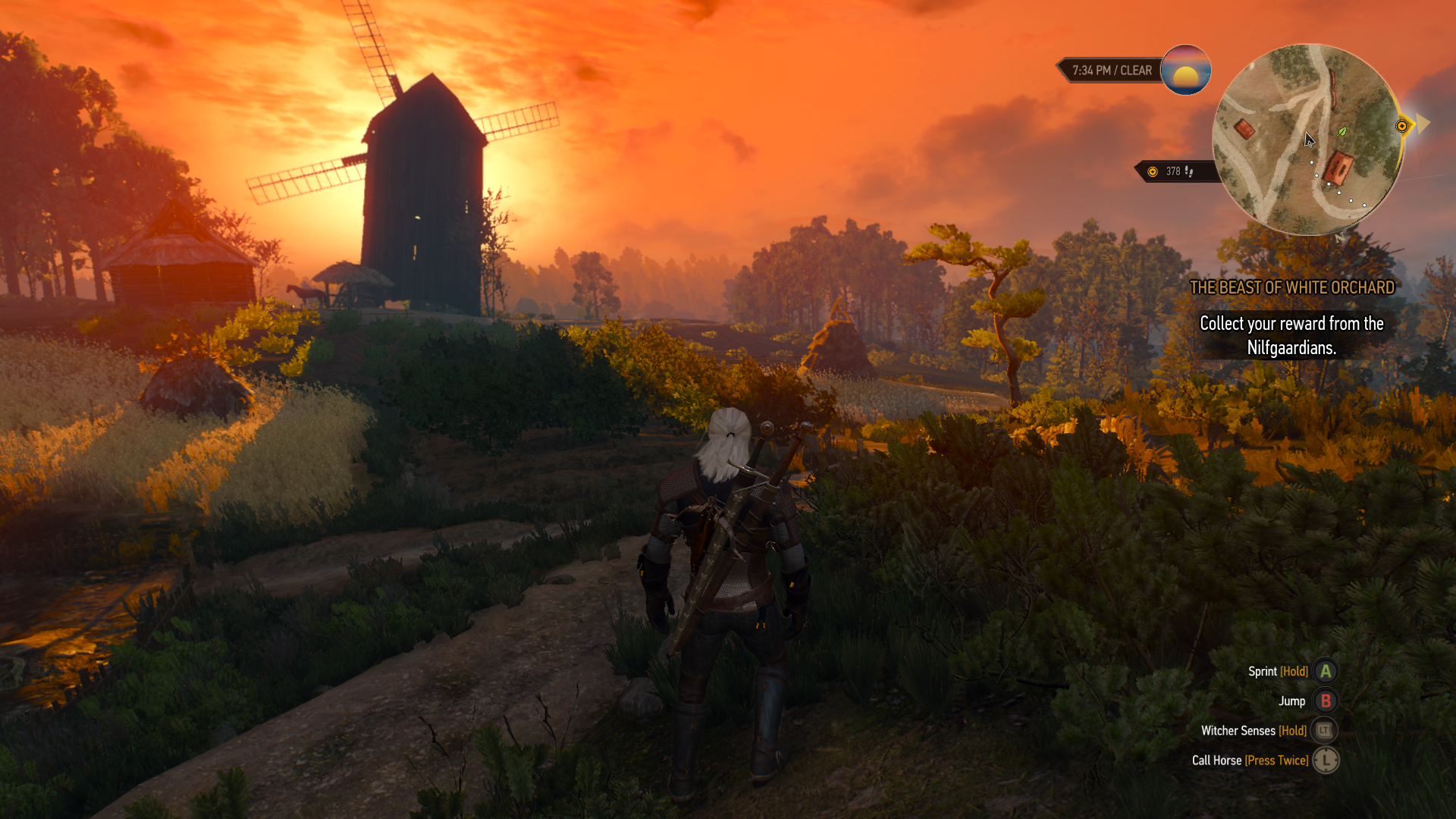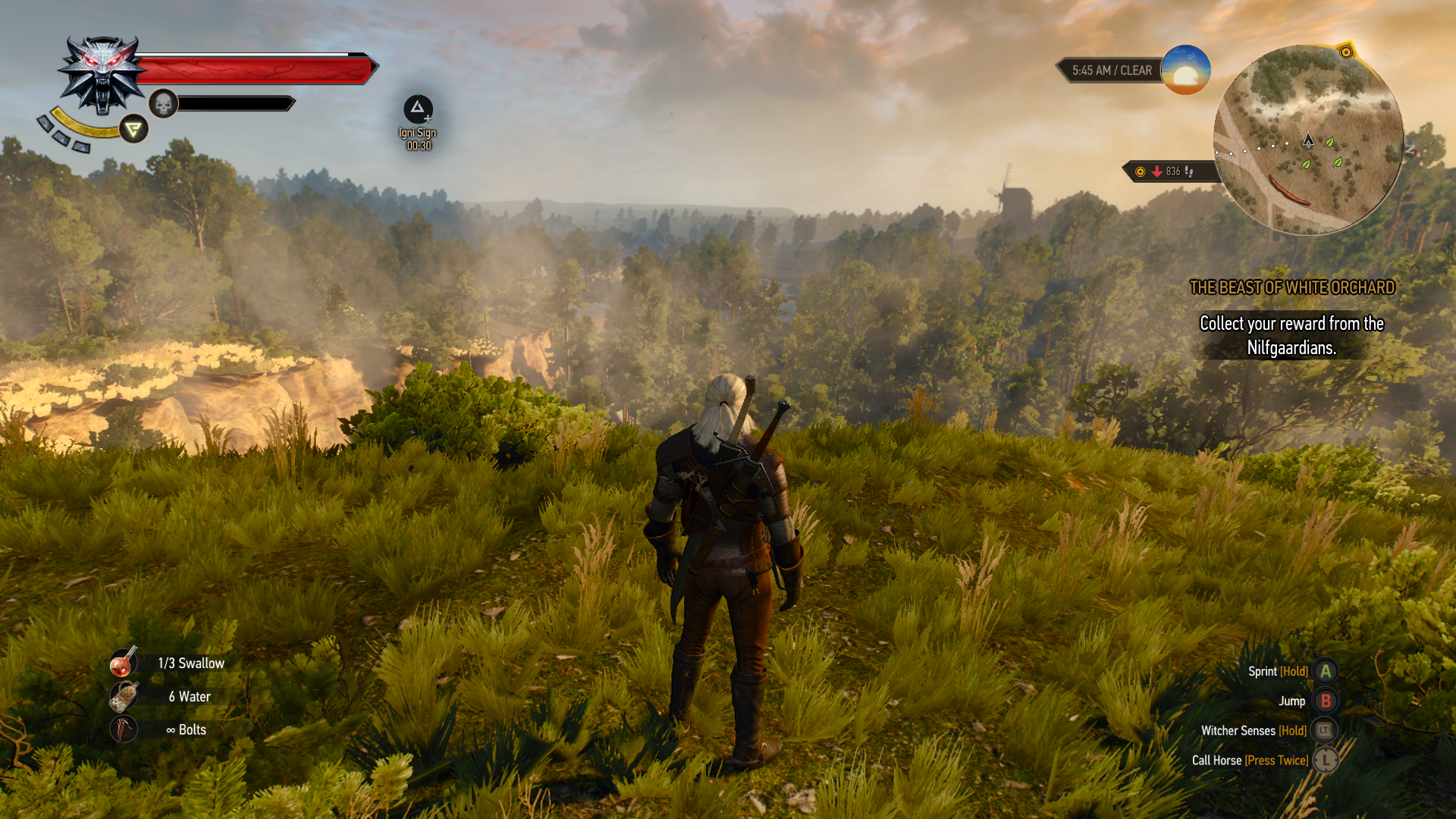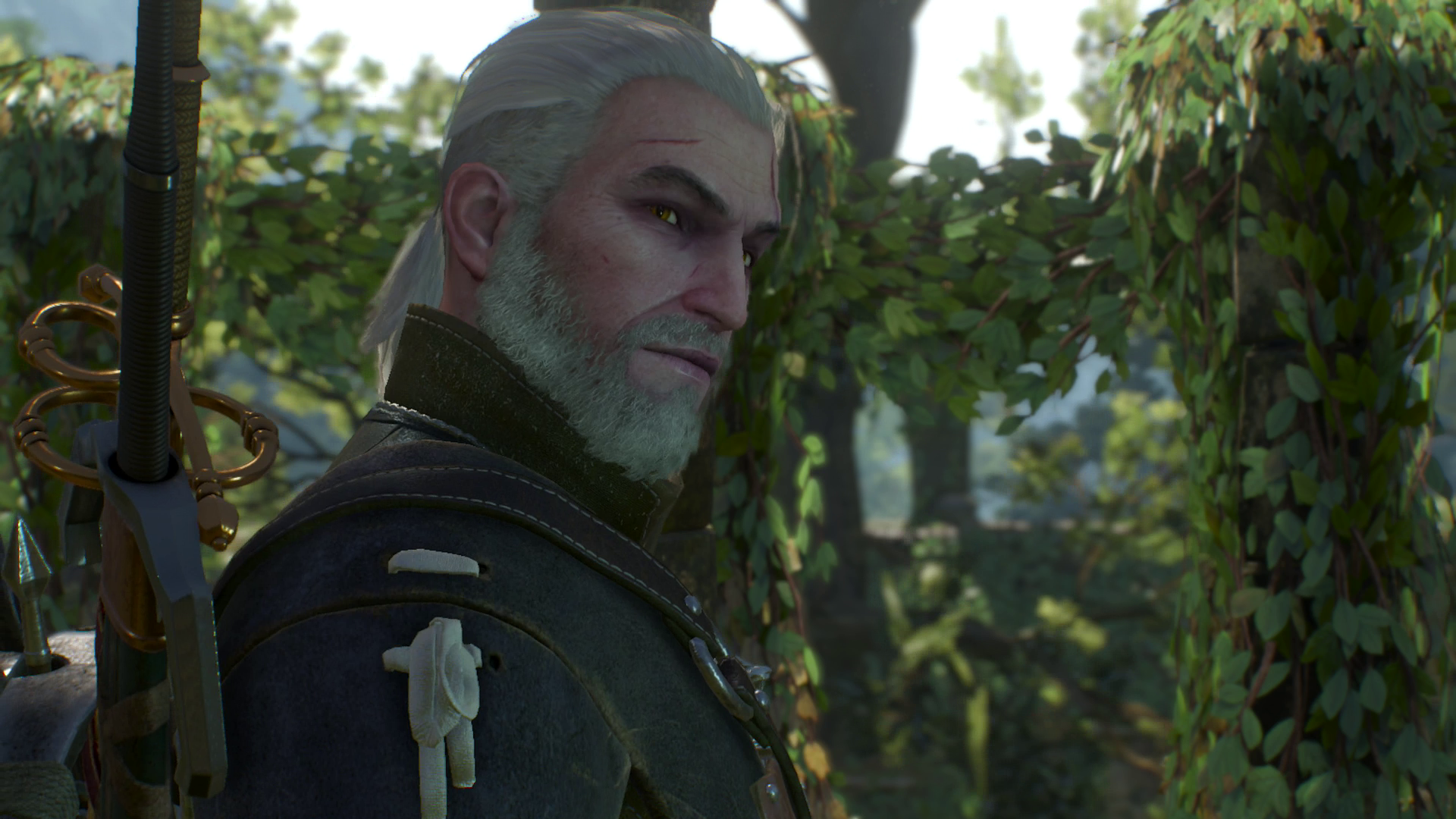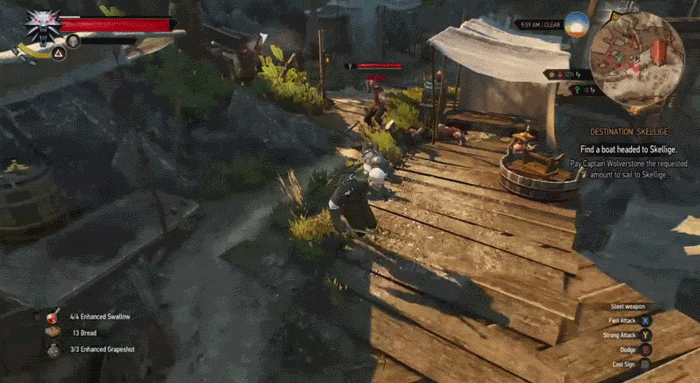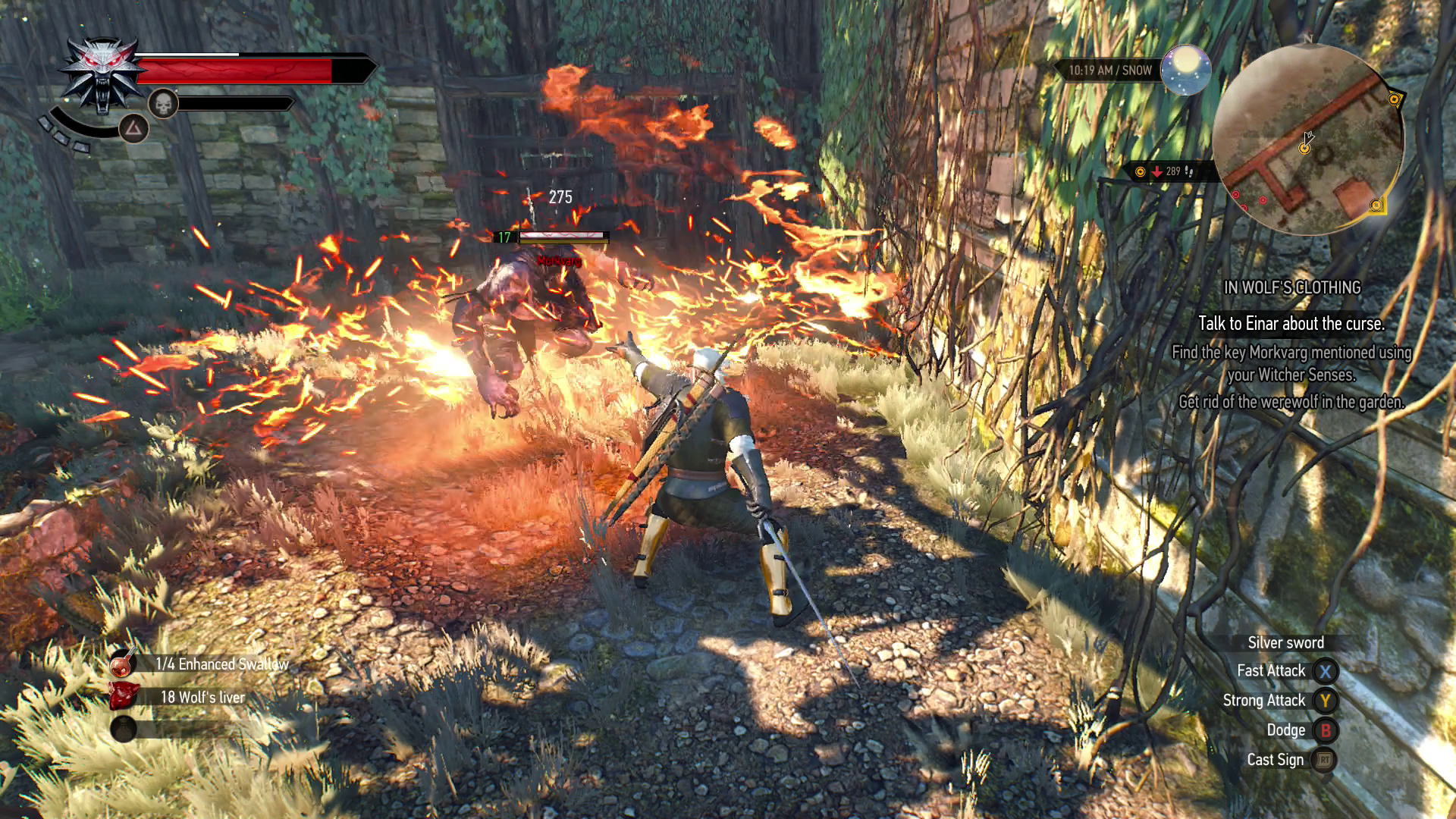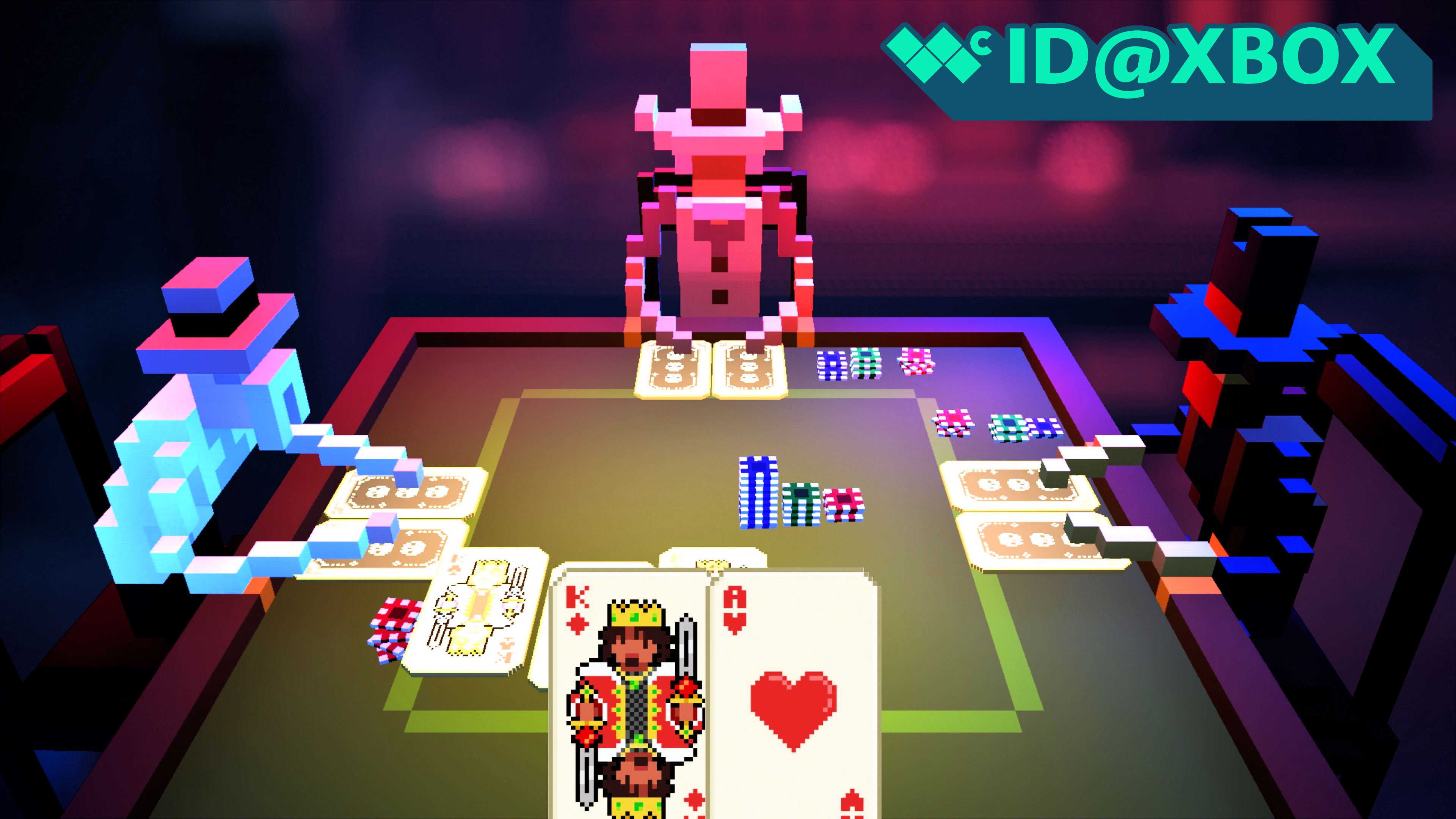Review: The Witcher 3: Wild Hunt
Maintaining a critical perspective is tough when you're the long time fan of a franchise. Thankfully, The Witcher 3 is just so good there's very little to be negative about.
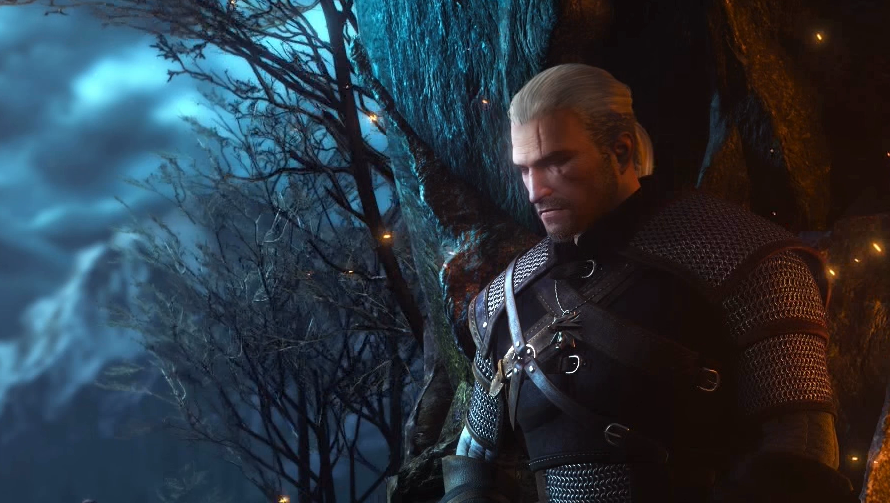
The Witcher 3: Wild Hunt is the brainchild of Polish developer CD Projekt RED. Their answer to the WRPG genre delivers a gargantuan open world weaved together with a nail-bitingly mature narrative. Witcher 3 is the end of a trilogy that follows the exploits of the superhuman Geralt of Rivia. Geralt is a witcher, who are a caste of warrior monks trained since childhood to seek out and slay monsters that plague the land and its medieval populace.
The game has sold four million copies in just two weeks and rides high in the 90s on Metacritic. If you're a fan of WRPGs, you're probably waist deep in the game's perilous Northern Kingdoms already, but if you're still unsure here are my thoughts on The Witcher 3: Wild Hunt.
Presentation
A living, breathing world
The Witcher 3: Wild Hunt is bloody gorgeous, with an emphasis on bloody. The game's world is heavily inspired by medieval Eastern Europe, and it displays that inspiration with class and authenticity. On Xbox One, The Witcher 3 hovers around 30 FPS and utilises dynamic scaling between 900p and 1080p which prevents slowdown during intensive moments. I haven't suffered a single instance of crashing or graphical lag, save for a pre-rendered cut-scene error that has since been patched. CD Projekt RED's technical prowess is matched only by their attention to detail.
The game's natural locations enjoy biodiversity that similar games have yet to touch.
CD Projekt RED placed a lot of emphasis on the idea that The Witcher 3 is a living, breathing world, and it's hard to suggest that they haven't delivered. The Northern Kingdoms depicted in The Witcher 3 are mind-boggling with detail. The Witcher 3's largest cities are crammed with dangerous alleyways, uncharted sewers and detailed interiors. Class divisions are clearly visible as you traverse the muck carpeted streets of Novigrad's slums, all the way up to the extravagant estates of the city's nobility. Peasants scrape out a meager existence on the outskirts, dogged by war-induced anarchy and the monsters who come to feast on the vanquished.
Border to border, The Witcher 3 is perhaps the best-looking game on the Xbox One today, and most certainly the best looking open world game. The sun touches every blade of grass, oozing warmth through the screen. The game's natural locations enjoy biodiversity that similar games have yet to approach. In a single forest scene, I counted nine separate types of plant species, four different types of songbird and the sounds of what can only be described as a frog in heat. I ended up leaving the scene running on my Xbox One for around 60 minutes, simply enjoying the ambiance, the shift from day into dusk and calm winds into a heavy storm.
From corpse ridden battlefields, golden hills, uncharted swamps, the water locked islands and untouched mountains, The Witcher 3 is a feast for the senses. I consider it, without a doubt, the most immersive game available on Xbox One today.
All the latest news, reviews, and guides for Windows and Xbox diehards.
Setting & Story
Mature, violent and emotional
The Witcher 3 takes place roughly six months after the events of The Witcher 2. The Southern nation of Nilfgaard has invaded the Northern realms, bringing chaos, famine and slavery to those unlucky enough to live near the border. Vizima, the city where much of The Witcher 1 took place, is occupied by Nilfgaard. It's not long after the start of the game that Geralt finds himself there at the behest of Emperor Emhyr var Emreis. The Emperor wishes for Geralt to find the whereabouts of Ciri, the Imperial princess and former protégé of Geralt. Ciri is a source, which means she has genes that give her the ability to produce wildly powerful magic. Like Geralt, Ciri is trained in the Witcher arts of swordplay and monster hunting, making her incredibly hard to track down.

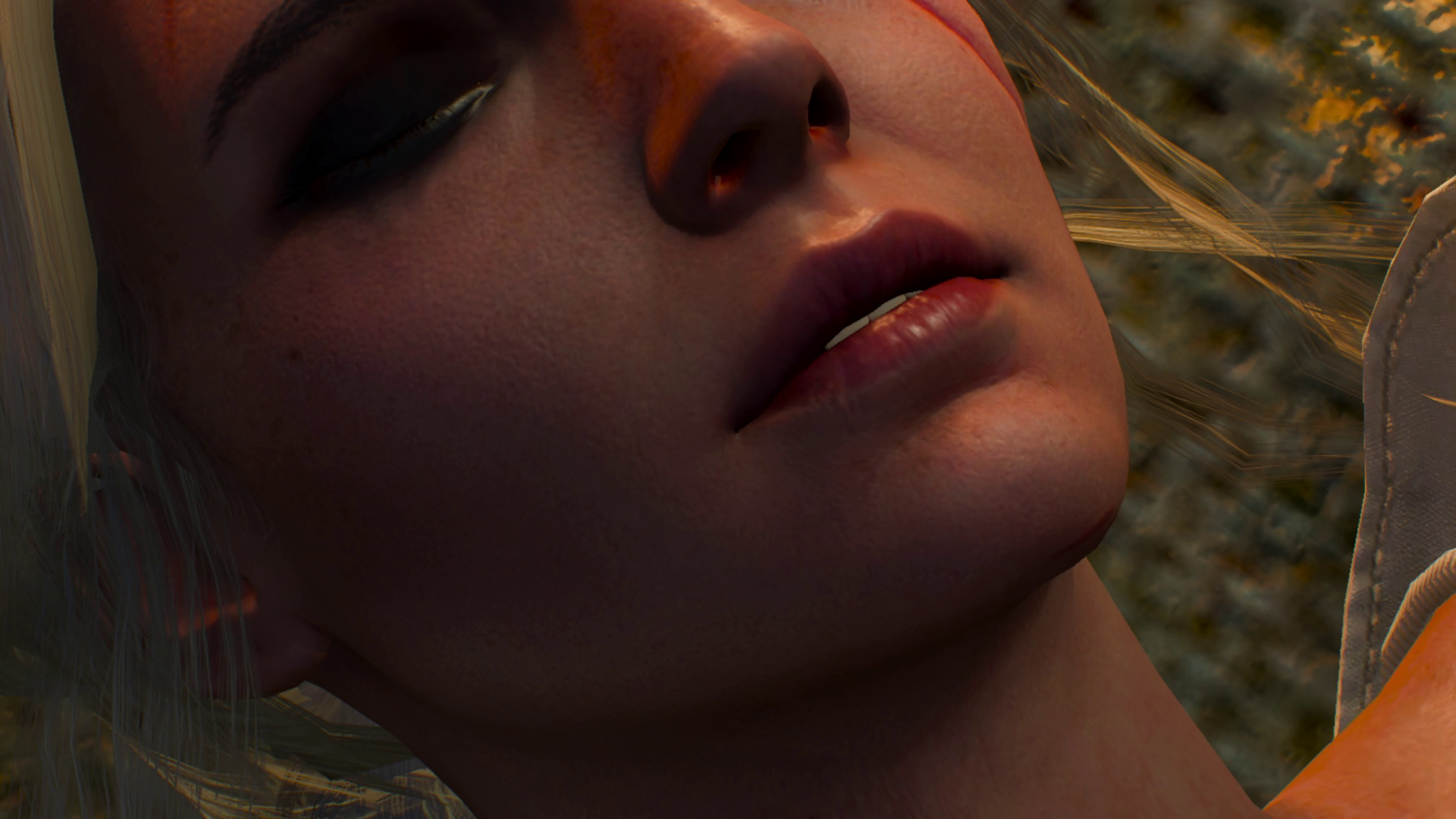
The Witcher games are based on an eponymously titled book series by Polish author Andrzej Sapkowski. The series is steeped in European mythology, as well as drawing on my fair continent's medieval history for its locations and setting. The height of technology enjoyed by the denizens of the North amounts to trebuchets, sailing ships and basic metallurgy. Superstition is rife, barbarous bandits prowl every dark corner and monsters encroach on every hamlet. Geralt is widely regarded as the greatest living Witcher, enjoying a degree of fame for his deeds. Only he has the abilities and skill to track down Ciri across a sub-continent beset by war, plague and roaming monsters.
The game world is meticulously consistent, adding authenticity and immersion to compliment those pristine visuals.
For me, despite having amazing presentation and gameplay, I feel that the greatest strength of The Witcher 3: Wild Hunt lie in its narrative. The game world is meticulously consistent, adding authenticity and thus immersion to compliment those pristine visuals. The voice acting is on the high-end for the most part, and the dialogue should provoke a full range of human emotion from even the most hardened hardcore gamer. Some of the dialogue is so witty that I've completely lost track of the fact I was playing a game, feeling instead like I was watching a big budget TV show.
Situations often present dialogue choices, which can influence the story at a later date. Seemingly innocuous decisions I'd made at the start of the game came back to haunt me 20+ hours in, which was equal parts surprising and gratifying. Choices aren't as dichotomic as they might be in Dragon Age or Mass Effect, mainly because Geralt's general personality is quite integral to the plot. Some fans looking for more influence over Geralt might find themselves disappointed as a result. This is very much Geralt's tale, and his sensitivity, charm, and dry wit makes the 100+-hour journey nothing short of a pleasure.
CD Projekt RED have painstakingly given weight to even the most minor side quests, many of which breathe life and history into NPCs you might only encounter once in the game. Each village has its story to tell, and the narrative governing the side quests all tie together like a gift waiting to be opened. One side quest might task you with the slaying of a wraith while another might give you clues about what led to the haunting in the first place. Many minor side quests compliment each other without being inextricably linked in this way. The questing across each location is cohesive on a level I haven't seen before in a WRPG. I sorely hope The Witcher 3 and its side quests set the standard for future RPGs to come.
Throughout The Witcher 3, you'll dive into gritty political intrigue, rescue villages from their local monsters and vanquish grand and ancient evil. Cover to cover, The Witcher 3 is an instant classic that has a little something for everyone. If you enjoy story-driven games, The Witcher 3 should be high on your list.
Gameplay
Challenging, diverse and rewarding
At its core, The Witcher 3 is an open-world action RPG, with an emphasis on story and swordplay. Most of the game takes place across 4 contained but huge open-world locations, which force you to turn back if you hit the seams. The main quest to track Ciri pulls you from location to location. Along the way you'll find NPCs in need of aid, notice boards crammed with side quests and various other features which keep play fresh. Some of the side activities involve liberating prisoners, treasure hunts for better gear and rescuing abandoned settlements from threats. These are beside mini-games like horse racing, fist fighting tournaments, and the addictive Gwent card game.
Quests take on all sorts of forms, and they're always soaked in context. I never felt bored with the Witcher 3's optional quests, as they're all deeply woven into the local narrative (as explained above). Geralt's signature monster hunting contracts take the form of investigations. Often, these quests require you to follow a monster's footprints, track their kills or follow their scent, using Geralt's super-human witcher senses. The game frequently changes the formula for the delivery of these quests, to prevent them becoming stale. Occasionally a monster killing will turn into a murder investigation, or something even more intriguing. These quests rarely feel formulaic.
Some of the game's optional objectives can become tiresome, particularly if you out-level an area's content. There's nothing forcing you to explore each and every cave, buried treasure and bandit camp on the map, but it would be nice if the rewards for doing so scaled in level along with Geralt.

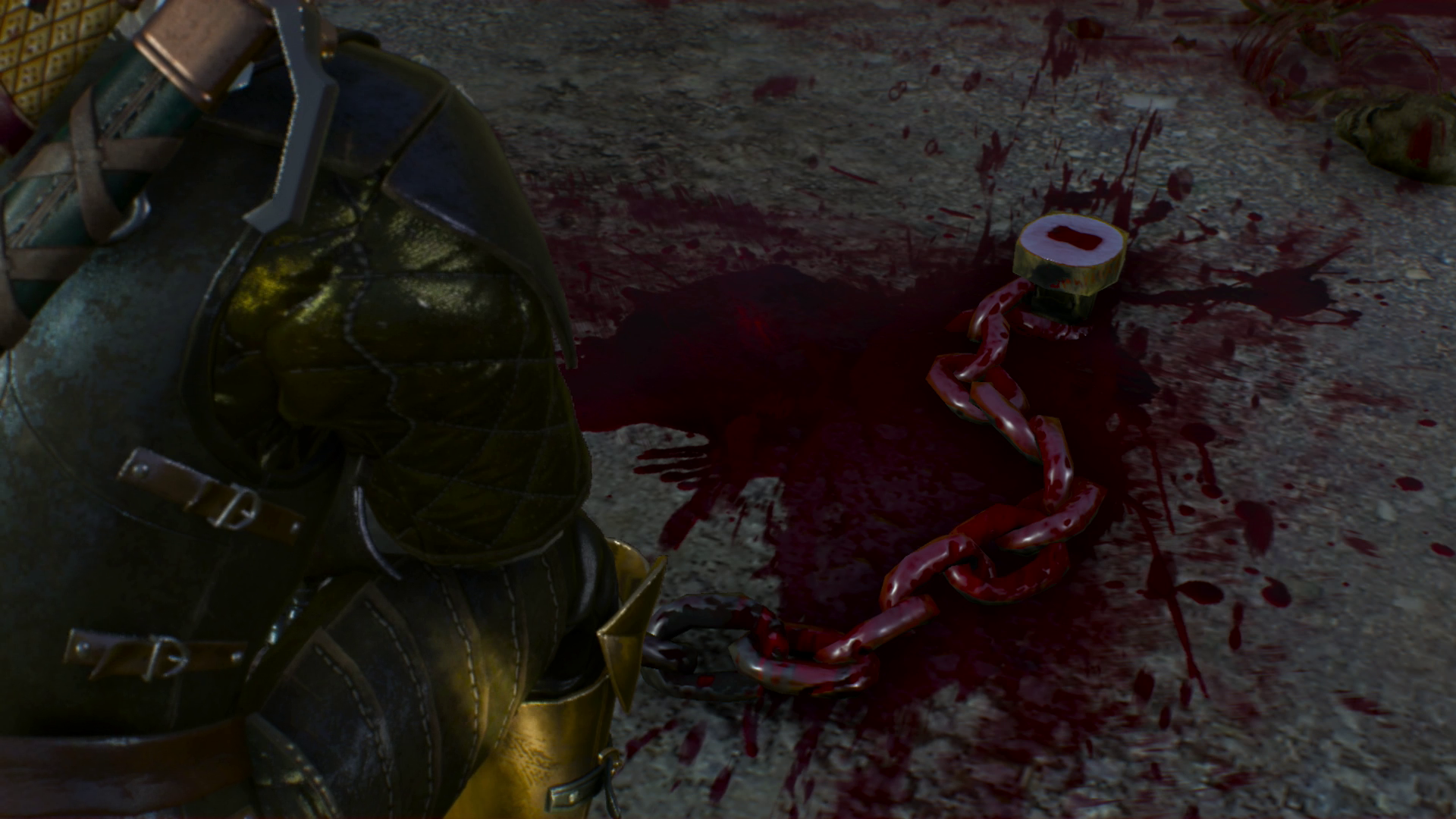
Another method The Witcher 3: Wild Hunt uses to command your attention across its 40+ hour story, is through combat. Each and every monster type (and oh, there's dozens of them) demands that you use a different combat strategy. Combat consists of a heavy attack pattern, a light attack pattern, dodges, spells and other tools. Some reviewers have claimed that The Witcher 3's combat is unfair, but I'd argue that they're playing it wrong. The bestiary contains information on every monster you'll encounter in combat, offering tips on how best to fight each beast. Geralt is a witcher, and studying your enemies is consistent with the game's lore. As such, you'll find yourself learning the attack patterns of ghouls and drowners until its second nature. Groups of enemies will splatter Geralt very easily on normal difficulty, and your strategies will have to change to meet each situation. To keep things fresh, The Witcher 3 introduces variants of the same enemy types that attack differently, and human enemies are persistently diverse with their attack strategies and weapons.
Eventually, you'll have enough potions types, blade oils, bombs and talents to meet most challenges fairly easily, especially if you're a completionist. As someone who likes to hunt down every map location, I often found myself much higher level than the story quests demanded of me. Luckily, the game allows you to adjust the difficulty if it ever becomes too easy.
The only gripes I have with how the Witcher 3 plays are found in some of its side-systems. Swimming, horse riding and sailing all feel cumbersome and less intuitive than combat and general movement. Inventory management is an absolute pain, and towards the end of the game your bags will be so overflowing with quest items, herbs and other junk that it causes the UI to lag. Considering that The Witcher 1 had an auto-sort inventory button, it seems odd that it didn't make the grade for The Witcher 3. The map system also fights the player, refusing to allow you to zoom out far enough. This is particularly annoying when a quest objective is far from your present location, finding the quest marker can be like looking for a needle in a haystack. CD Projekt RED are taking feedback on how the game works and are delivering frequent patches, so I wouldn't be surprised if these UI systems become overhauled.
The Witcher 3: Wild Hunt is hard to fault on gameplay overall. I think I would've liked more unique set-piece boss fights like the Kayran giant squid from The Witcher 2 or the Zeugl giant squid boss fight from The Witcher 1, but it's a tiny gripe. Maybe I just have a thing for cephalopods. The Witcher 3: Wild Hunt is so polished it's shimmering with gameplay goodness, and it will earn a place among the greatest action RPGs without a doubt.
Final Words
An instant classic
The Witcher 3: Wild Hunt is simply incredible. I've looked hard for things to complain about, but it's mostly a fruitless endeavour. The quests are diverse and varied; the plot is fist-clinchingly gripping, and the combat is strategic and rewarding.
Beyond the game itself, CD Projekt RED have already provided three system updates improving the game's stability (which was near-perfect on day one). This is beside new quests and other small DLC all of which are entirely free. The game features no microtransactions, no day 1 DLC, and no platform exclusive content. The Witcher 3: Wild Hunt is a pure game, a true labour of love for video game development. It is an example of what a game can be without publisher meddling.
Pros:
- Challenging, but rewarding gameplay
- Industry leading game design
- Gripping plot with memorable characters
- Meaty 100+ hour content, bolstered by free DLC
Cons:
- Inventory, maps and other menu systems are cumbersome
- So good that it ruins real-life relationships and work productivity
The Witcher 3: Wild Hunt is among the most beautiful, majestic and engaging games on Xbox One today. I'd not hesitate to call it the best game available on Xbox One today, but those are a Witcher fan's words. If you like RPGs, you've probably already picked this up. But, fans of third person action, fantasy story telling or just good games should also buy this. It could be a long time before we see an RPG on this level again.
- The Witcher 3 – Xbox One – 26 GB – $59.99 – Amazon Link
- The Witcher 3 – Windows – $59.99 – Steam Link

Jez Corden is the Executive Editor at Windows Central, focusing primarily on all things Xbox and gaming. Jez is known for breaking exclusive news and analysis as relates to the Microsoft ecosystem while being powered by tea. Follow on Twitter (X) and tune in to the XB2 Podcast, all about, you guessed it, Xbox!
